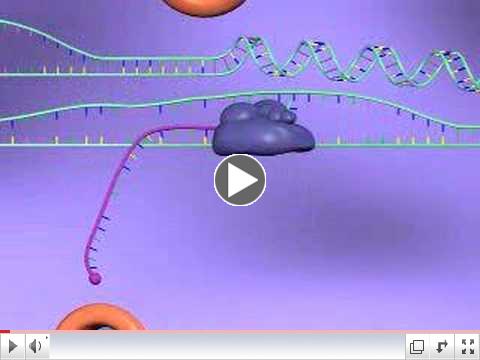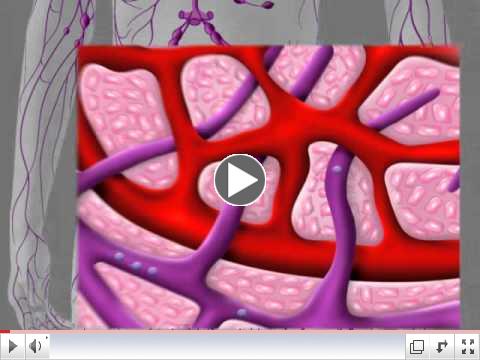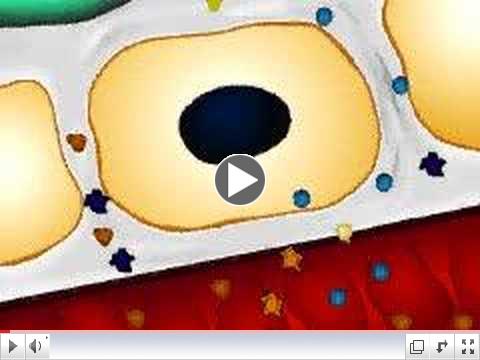|
BE SOCIAL
| |
__________________

Join our Cause
__________________

|
|
NEWLY DIAGNOSED
| |
If you have recently been diagnosed with CLL, you probably have questions.
Information about CLL
What we are doing to defeat CLL
|
|
NOW ACCEPTING GRANT APPLICATIONS
| |
CLL Global is currently accepting Letters of Intent (LOIs) from researchers who wish to apply for funding to conduct CLL research. The LOI submission deadline is Friday, September 28th, 2012.
CLICK HERE for more information and to access the relevant forms and guidelines.
|
|
GENES AND PROTEINS
| |
(Videos are provided for you to have a better understanding of what is being discussed in the articles.We do not endorse the source or full content of videos.)
 | | Gene Expression |
Learn how proteins interact with a cell to allow for many different functions to take place.
|
|
SEPTEMBER IS BLOOD CANCER AWARENESS MONTH
|
An estimated 16,000 new cases of CLL will be diagnosed in the US this year. We hope that in a September not too far away people will no longer have to endure harsh treatments or a diminished quality of life because of a diagnosis of CLL.
Please join us in raising awareness about CLL and encourage others to support our research efforts. Together, we will make a difference in this disease.
Easy ways to spread awareness:
- Put a stack of CLL Global brochures in your doctor's office
- Presentations to schools and communities
- Utilize your creative talents
|
|
IMMUNE SYSTEM
|
 Click on the image to learn more about the immune system. Provided by the National Institutes of Health________________ Watch these videos:
 | Learn about lymph!
|
 | | Lymphatic Vessels |
________________ Do you have questions about the immune system? Email us, and we will provide answers to your questions as the series continues. |
|
QUESTIONS/COMMENTS? | |
Is there something specific you want to read and learn about?
Let us know if you have any comments or suggestions for improvement.
You are the reason CLL Global exists, and we want to hear from you.
info@cllglobal.org |
|
WHY WE ARE WORTHY OF YOUR SUPPORT
|

CLL Global exclusively funds CLL research.
_______________The president and CEO of CLL Global, Dr. Michael Keating, has been involved in CLL research for a few decades. He knows the who, what and when of CLL research and guides the organization accordingly. _______________Only 5% of total funds are used for administrative overhead. This means that 95 cents of every dollar donated goes straight to CLL research.
|
|
DONATE NOW!! | |

|
|
|
|
Greetings!
Tidbits has gone red in honor of Blood Cancer Awareness Month. Below you will find some ideas to share knowledge and get others involved as we continue to put the pieces of the CLL puzzle together. Speaking of knowledge, the Immune System 101 series continues below in the CLL Education section. You can also read about a grant project as it comes to an end and the beginning of a fellowship CLL Global is funding.
|
|
|
RESEARCH NEWS
| |
Role of STAT-3 in CLL
CLL cells, which are malignant B-cells, slowly proliferate and spontaneously die off (a process called apoptosis) at a much slower rate compared to normal B-cells. This leads to the accumulation of CLL cells which are able to persist partly because of the microenvironment in which they live. A microenvironment, which is an environment on a microscopic level, contains many different types of cells, proteins, and various molecules, all of which maintain the integrity and survival of each other. CLL cell growth and survival is impacted by signals from neighboring cells, signals from circulating growth factors, and signals from within the CLL cell itself.
 |
An example of the bone marrow microenvironment. The white and blue ovals represent the tumor cells and are surrounded by a matrix of cells and other molecules that allow the tumor cells to thrive. Image provided by www.nature.com.
|
Members of the CLL-Stromal Interactions Group within the CLL Global Alliance have focused their research on how the microenvironment impacts CLL cells. One member of this group, Dr. Zeev Estrov (MD Anderson), and his colleagues previously identified that an intracellular signaling protein called STAT-3 is activated in CLL cells and stimulates CLL cell growth and survival. The basis of his CLL Global Alliance project was to analyze the role of STAT-3 in CLL. Dr. Estrov recently submitted his final report for his Alliance project, providing an update on what has been learned after three years of funding. STAT stands for signal transducer and activator of transcription. Basically, STAT-3 proteins transfer signals in the cell and play a pivotal role in cell survival and production. STAT-3 has anti-apoptotic and proliferative effects meaning that it tells the CLL cells to stay alive and to reproduce. The protein STAT-3 is activated in a manner that is unique to CLL. Normally the protein has to receive outside signals in order to become activated. In CLL cells the protein activates on its own. Dr. Estrov's group has found that once activated in CLL cells, STAT-3 also activates several genes in the cell and also activates the protein NF-ƙB (stands for nuclear factor - kappa B). Activation of NF-ƙB stimulates the production of additional factors inside and outside of CLL cells, providing another layer of protection.  | |
|
In addition, Dr. Estrov's group has examined VEGF in CLL cells. VEGF (which stands for vascular endothelial growth factor) is a protein that stimulates the growth of new blood vessels. This is normally a good thing; however, VEGF levels are significantly higher in CLL than in normal controls, and VEGF levels correlate with patients' white blood cell (WBC) count. Dr. Estrov's group found that in CLL cells, STAT-3 activates VEGF which affects the interaction between the cells and their microenvironment, providing CLL cells with yet another survival advantage. Dr. Estrov has been able to more clearly define the role of STAT-3 in CLL. Many more questions have arisen that he intends to further investigate. It seems that inhibiting the spontaneous activation of STAT-3 in CLL cells should halt the stimulation of the proteins described above and allow the cells to go through apoptosis. The key now is to find molecules that can inhibit the proteins. There are several companies developing molecules that target STAT-3. We will keep you posted as to whether these compounds are moved into CLL trials. |
CLL EDUCATION
| |
Immune System 101
CLL can be synonymous with immune issues. This is because CLL cells are malignant B-cells which are an important part of the immune system. Last month we started a series on the immune system so you can have a better understanding of how CLL affects the body and why CLL Global is supporting efforts to restore the immune system. Click here if you need a refresher of last month's article. This month, we provide a more in depth overview on lymphoid organs and the lymphatic system.
The lymphoid organs are located throughout the body and include the bone marrow, lymph nodes, tonsils, appendix, spleen and thymus. The bone marrow is responsible for producing stem cells which then develop into several different types of blood cells. The body sends chemical signals to the bone marrow that determine which cells need to be produced. Lymph nodes serve as filters for the circulating blood and trap antigens for the immune cells to eliminate. There are large quantities of lymph nodes throughout the body. Lymph nodes are located in the head and neck, under the arms, up and down the chest and abdomen and in the groin.
 | |
|
The tonsils, appendix and spleen serve the same filtering functions as the lymph nodes. The spleen also plays the important role of eliminating old red blood cells. Many immune cells call the lymphoid organs home and stay in the organs until a signal is sent that action is needed. Other immune cells circulate the body to ensure all is running smoothly. The thymus is where T-cells, a specific type of immune cell, go after leaving the bone marrow to mature and develop into T-cell subtypes with specific functions.
The lymphatic system is made up of more than just organs and cells. Running parallel to blood vessels are lymphatic vessels. These vessels connect the lymphoid organs and contain fluid called lymph which circulates in the body through the vessels, bathes the tissues in the body and removes waste product from the all of the cells. The waste is transported through the lymphatic vessels to be eliminated in the lymphoid organs.
Many people have had their tonsils, appendix, spleen or lymph nodes removed for one reason or another without significant consequence. The only organ in the immune system that is absolutely necessary for survival is the bone marrow. This is because the cells needed to keep the body alive and well come from the bone marrow. There are presently investigations into whether B-cells become CLL B-cells when first produced in the bone marrow or if CLL develops once the B-cells are in circulation.
Although the thymus serves a specific role, surprisingly the removal of the thymus does not cause a deficiency in T-cells. This is because prior to birth the thymus differentiates a significant amount of T-cells which can reproduce indefinitely.
Perhaps this column brings back memories of biology class. Maybe it will allow you to help your kids and grandkids as they head back to school. The goal is to make sure that everyone has the same vocabulary as we delve deeper into CLL and its effects on the immune system. Next month, we will discuss the immune cells in more detail as we start to look at the development of CLL.
|
|
THE HAPPENINGS
| |
CLL Global Sponsored Fellowship
CLL Global provides funding for research grants, but also takes advantage of opportunities to provide funding for promising causes related to CLL. On occasion, CLL Global provides funding for fellowships which allow young, up-and-coming CLL physicians and CLL researchers a solid platform to advance their careers. This has included funding for postdoctoral fellows in laboratories to advance knowledge of CLL and funding for clinical fellows with specific goals related to the care of CLL patients.
Since February 2012, CLL Global has been supporting the clinical fellowship of Dr. Ohad Benjamini at MD Anderson
 | | Dr. Ohad Benjamini |
Cancer Center in Houston, TX. Dr. Benjamini comes from Chaim Sheba Medical Center in Tel Hashomer, Israel. He is participating in a clinical fellowship which involves clinical training in the diagnosis and management of CLL, other leukemias and related malignant disorders. Dr. Zeev Estrov (see his project update above) is serving as Dr. Benjamini's mentor while at MD Anderson. Upon completion of his fellowship, Dr. Benjamini will return to Sheba to lead its CLL Program.
In addition, Dr. Benjamini is conducting clinical research at MD Anderson on the treatment options and responses of high risk CLL patients who relapse after allogeneic stem cell transplantation. After he completes his fellowship program, Dr. Benjamini will be well prepared to share his knowledge of CLL with his colleagues in Israel. He also anticipates becoming actively involved in the CLL Israeli Research Consortium which is supported by CLL Global.
Dr. Benjamini is part of the future generation of CLL research and is totally committed to enhancing clinical expertise in CLL. Creative and talented investigators like him are needed to explore the rapidly expanding opportunities for CLL research. Fellowship programs are imperative in developing the next generation of investigators who will be committed to this specific disease.
|
|
THANK YOU FOR SUPPORTING US!
| | |
We are glad you have joined us for another issue of Tidbits and look forward to sharing more with you next month. In the meantime, SPREAD AWARENESS, SPREAD AWARENESS, SPREAD AWARENESS! It is up to us to change what it means to be diagnosed with CLL.
"Act as if what you do makes a difference. It does." -William James
Sincerely,
CLL Global Research Foundation
|
|
|